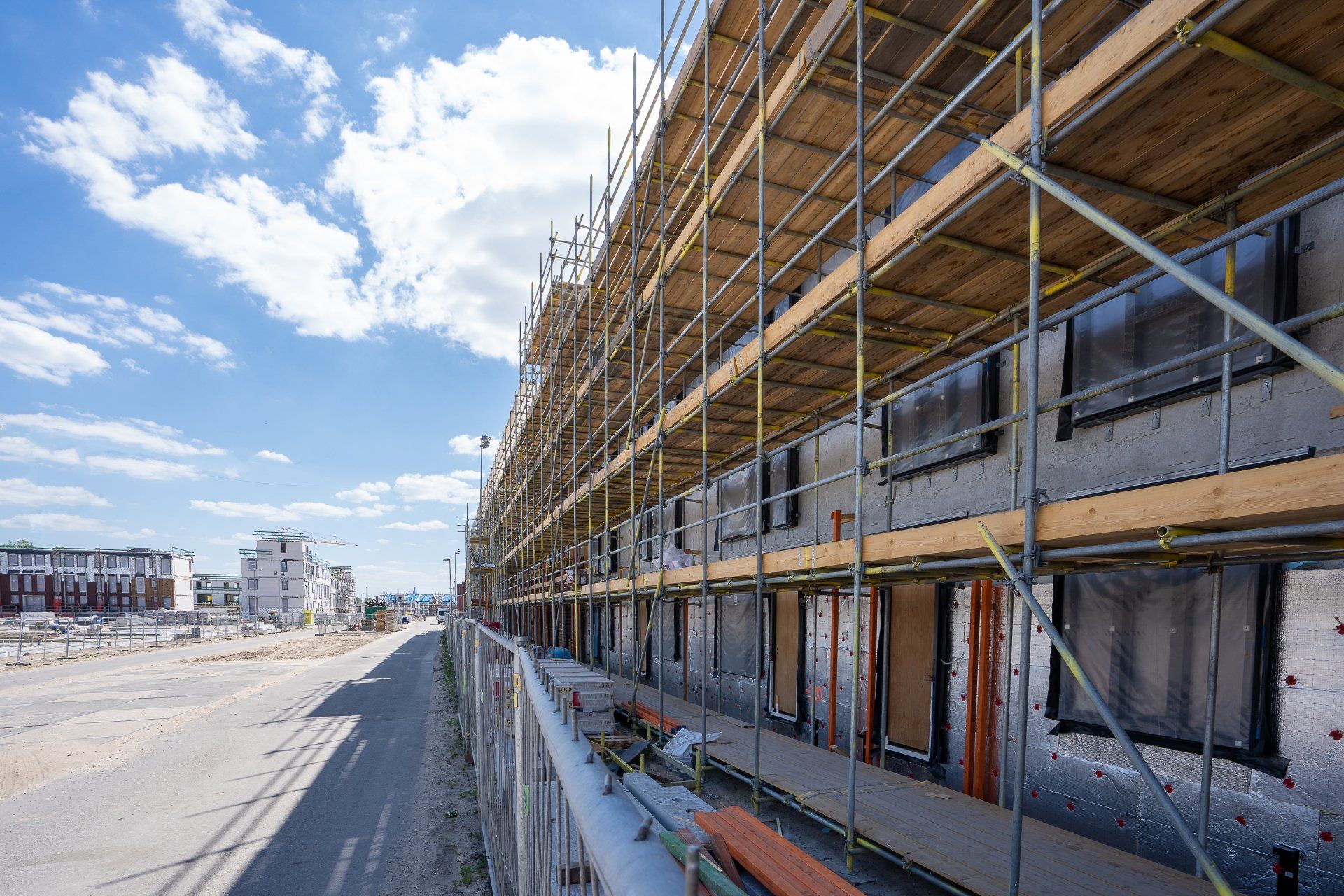Guide to Choosing the Right Scaffolding System for Commercial Projects
Guide to Choosing the Right Scaffolding System for Commercial Projects in Leicester
Choosing the right scaffolding system for commercial projects is crucial for ensuring both safety and efficiency. Selecting the appropriate scaffolding relies heavily on understanding the specific demands of a project, such as load requirements and project duration. It offers the flexibility and security needed for various construction situations while maintaining compliance with safety standards.
Scaffolding types differ significantly, with some designed for quick assembly and others for extended stability. Options like Ringlock scaffolding provide robust solutions with components such as decking and scaffold stairs, which are ideal for heavier loads. When considering whether to rent or buy, project budget and timeframe are key factors that can influence the decision.
For those involved in large-scale commercial projects, having the correct scaffolding is indispensable to ensure project success. Making this choice requires careful evaluation of project conditions and a comprehensive understanding of the different scaffolding systems available.
Understanding Different Scaffolding Systems
Selecting the appropriate scaffolding system for commercial projects hinges on various factors like project type, height, and load capacity requirements. Proper knowledge of different scaffolding systems ensures safety, efficiency, and cost-effectiveness.
Types of Scaffolding
Various scaffolding systems cater to diverse construction needs. System scaffolding, known for its modular design, includes types like Kwikstage and Cuplok, offering adaptability and strength. Frame scaffolding is common for shorter, simpler projects due to its ease of assembly. Suspended scaffolding is particularly useful in high-rise construction, enabling work at elevated heights with minimal ground obstructions. Other options include tube and coupler scaffolding, recognized for its flexibility in complex structures, and trestle scaffolding for indoor tasks with lower elevation requirements.
Pole scaffolding and cantilever scaffolding are vital for projects near walls, offering extra support and maneuverability. Rolling scaffolding provides mobility, essential for tasks requiring frequent repositioning. Each type caters to specific project demands, ensuring worker safety and structural integrity.
Selecting the Right Scaffolding Type
Choosing the right scaffolding system involves assessing the specific requirements of the construction project. Consider the project's height and load capacity needs to determine suitability. For tall structures, suspended scaffolding might be optimal, while supported scaffolding suits projects with firm base support. Rolling scaffolding is ideal when mobility is a priority.
Evaluate the environment—confined spaces may necessitate narrow frame scaffolding, while open areas might benefit from wider structures. System scaffolding is advantageous for larger, more complex jobs due to its versatility. Project timelines, safety protocols, and budget constraints should also guide the decision, ensuring the chosen scaffolding meets all operational and regulatory standards.
Safety Standards and Compliance
When selecting scaffolding systems for commercial projects, it's crucial to focus on critical safety features and follow regulatory compliance. Adhering to these standards ensures both the safety and efficiency of the work environment.
Critical Safety Features
Scaffolding systems must prioritize safety to prevent accidents and injuries. Essential features include guardrails and toeboards that prevent falls and debris from causing harm. Guardrails are typically installed at the platform's open edges to mitigate fall risks, while toeboards prevent objects from slipping off the edges and injuring those below.
The platform should be solid and free from visible wear, with planks laid close together. The gaps ideally should not exceed one inch, ensuring both stability and protection. Incorporating these safety features reduces hazards and promotes a secure working environment. Regular inspections of these elements help maintain their integrity, reinforcing a culture of safety and efficiency.
Regulatory Compliance
Compliance with safety standards is crucial. Agencies such as OSHA (Occupational Safety and Health Administration) and ANSI (American National Standards Institute) set forth guidelines to protect workers. These include specific requirements for scaffold construction, load limits, and inspections.
Familiarizing yourself with local and national safety regulations can help maintain compliance with construction standards and enhance operational safety. Violations of these regulations can result in severe penalties and pose risks to worker safety. Thus, understanding and implementing these standards is essential for the successful completion of commercial projects. Maintaining compliance ensures a safer workplace and aligns with industry best practices.
Economic Considerations
Selecting a suitable scaffolding system involves careful economic evaluation. Important factors include the initial cost, ongoing maintenance, and how efficiently the scaffolding can be utilized to meet project demands.
Estimating Scaffolding Costs
To begin, estimating costs involves assessing expenses associated with purchasing or renting scaffolding. Factors influencing these costs include project duration and scale.
Renting scaffolding may be a viable option for short-term projects, as it avoids large upfront costs associated with purchasing.
However, when opting to purchase, consider it a long-term investment. Buying can be cost-effective for ongoing or multiple projects over time, as ownership reduces rental fees for future use.
Additionally, consult with potential scaffolding suppliers to ensure competitive pricing and understand all financial commitments.
Maximizing Scaffolding Efficiency
Efficiency considerations involve evaluating the ease of assembly and how it contributes to overall cost savings. A system that can be quickly and safely assembled reduces labor costs and project downtime.
Materials and design impact both maintenance needs and long-term reliability.
A modular scaffolding system might offer flexibility, adjustable configurations, and a return on investment through reusable components.
Furthermore, regular maintenance of equipment is crucial to prolong lifespans and prevent unforeseen costs. Keeping scaffolding in optimal condition minimizes disruption and secures project timelines, which indirectly influences the project's financial health.
By focusing on efficiency and strategic maintenance, businesses can effectively manage project finances.
Scaffolding Logistics and Mobility
Efficient scaffolding logistics and enhanced mobility are crucial for the smooth operation of commercial construction projects. Attention to site conditions and optimizing worker movement can greatly impact productivity and safety.
Assessing Site Conditions
Proper assessment of site conditions is essential before deciding on a scaffolding system. Consider environmental factors such as ground stability, weather conditions, and space constraints. These factors influence the choice of scaffolding materials and types.
Sites with uneven terrain may require adjustable scaffolding to maintain stability. In windy areas, additional bracing might be necessary to ensure worker safety. Compliance with regulatory standards to address potential risks effectively is also important. Knowing these variables allows for a more tailored scaffolding setup that meets the project's needs.
Enhancing Mobility for Workers
Enhancing worker mobility on scaffolding can improve efficiency and safety on-site. Choose mobile scaffolding systems for projects requiring frequent relocations. These systems often have wheels or can be easily reassembled.
Design the scaffolding layout to minimize obstructions and provide ample pathways for workers. Consider the positioning of platforms, ladders, and access points for seamless movement. This attention to detail not only speeds up work processes but also reduces the risk of accidents. Selecting these mobile scaffolding options carfully contributes to a more agile and safe construction environment.
Selecting a Reliable Scaffolding Contractor
Choosing a reliable scaffolding supplier is key to the success and safety of commercial projects. A dependable supplier ensures access to high-quality materials and well-designed scaffolding systems.
Conclusion
Selecting the appropriate scaffolding system is essential for commercial projects. It ensures safety, efficiency, and cost-effectiveness. With a variety of scaffolding types available, each offering unique advantages, choosing the right system is crucial.
Considerations include:
- Project requirements: Assess the specific needs of your project before deciding.
- Safety features: Non-slip platforms and sturdy materials are essential for worker safety.
- Scaffolding type: Choose based on the mobility and height requirements of the project.
For successful outcomes, consult with experts to evaluate your project's needs. This ensures the scaffolding system supports both safety and productivity. Remember, the correct scaffolding enhances the project's success through carful selection and implementation.
Frequently Asked Questions
When choosing a scaffolding system for commercial projects, safety, suitability, and compliance are crucial. It's important to understand the different types of scaffolding systems and how to effectively set them up and dismantle them, all while considering environmental and regulatory factors.
How can you ensure safety when using scaffolding on a commercial project?
Safety in scaffolding involves regular inspections, using protective gear, and ensuring that only trained professionals erect and dismantle the structures. Adhering to safety guidelines and using quality materials further enhance safety.
What are the key factors to consider when selecting a scaffolding system for a construction site?
Consider the load capacity, site conditions, and project duration when choosing a system. The material of the scaffolding, such as steel or aluminum, affects durability and cost. Accessibility and ease of assembly are also important.
What are the different types of scaffolding available and which are most suitable for large-scale commercial projects?
There are various types, including supported, suspended, and rolling scaffolds. For large-scale projects, supported scaffolding is typically preferred due to its stability and capacity to support heavy loads.
What are the compliance requirements and regulations governing scaffolding use in construction?
How does the environment and project scale affect the choice of scaffolding?
Environmental factors like wind, weather, and ground conditions influence scaffolding choice. Larger projects may require more robust systems, while smaller scales may allow for more flexible solutions.
What are the best practices for scaffolding setup and dismantling to ensure worker safety and project efficiency?
Ensure thorough training for workers on assembly procedures. Use safety harnesses, secure footing, and proper load distribution. Efficient dismantling involves careful removal of components in a planned sequence to maintain stability and safety.
For further information, Click here to visit our website or call Leicester Scaffolding Services JK on 0116 216 5534.
Click here to complete our contact form and see how we can help you with your scaffolding requirements.



